Urban Strategy
SHELTER ON WHEELS
Delhi is going to need 20 million new homes in the next 10 years. The acute shortage of affordable housing renders a large number of people shelterless. The city’s night shelter capacity however, caters to less than 5% of this homeless population.
‘Shelter on Wheels' envisions to address this pressing need by utilising Delhi’s bus fleet parked at depots in the night as shelter units.
The proposal derives its approach from believing that architecture is beyond just building new structures. It demonstrates a case of multi-functional infrastructure and how we can globally manage and distribute constrained resources.
‘Shelter on Wheels' envisions to address this pressing need by utilising Delhi’s bus fleet parked at depots in the night as shelter units.
The proposal derives its approach from believing that architecture is beyond just building new structures. It demonstrates a case of multi-functional infrastructure and how we can globally manage and distribute constrained resources.
Status
Concept proposal
Timeline
November 2018
Concept proposal
Timeline
November 2018
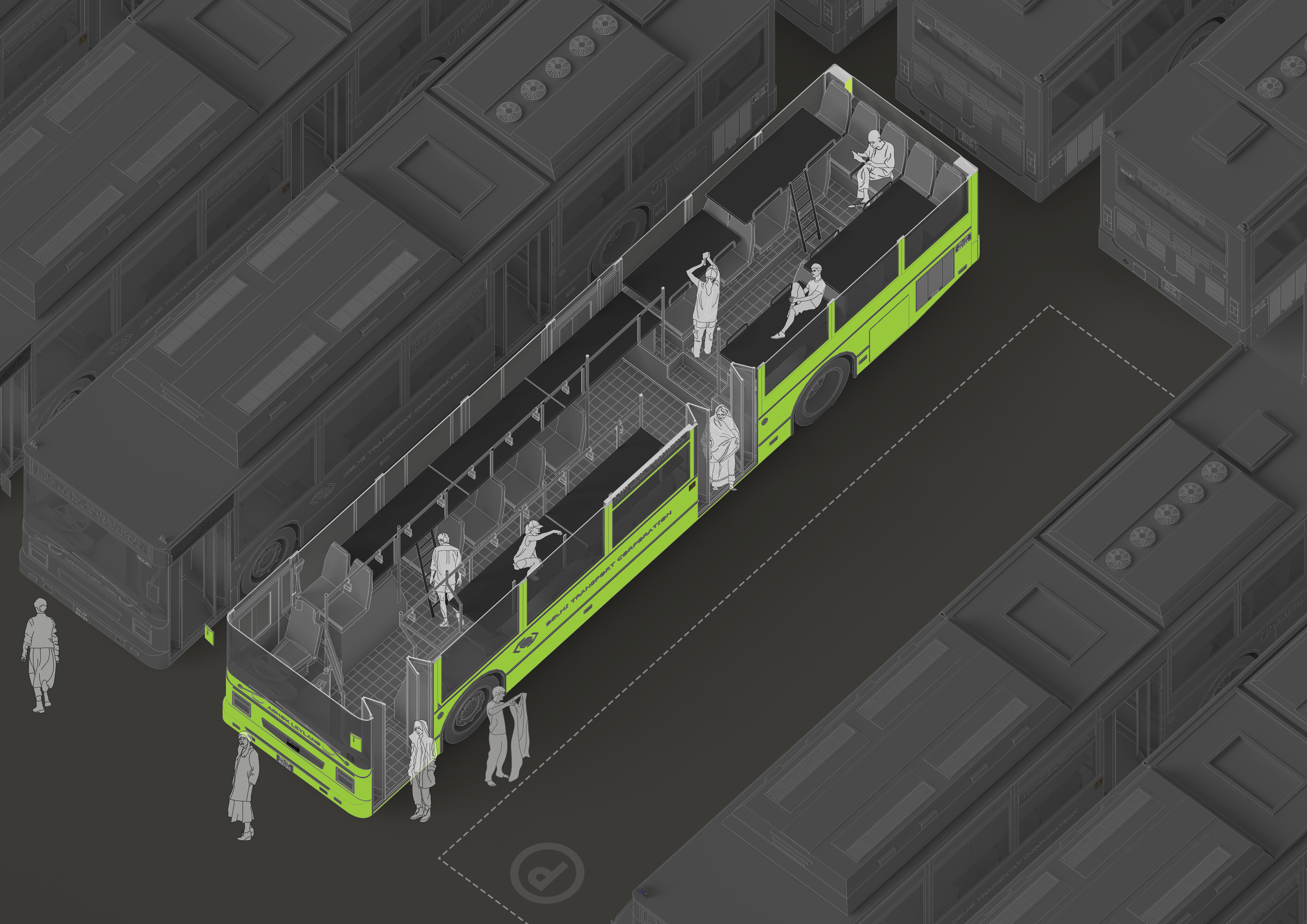
Context
With rising urbanisation and increasing numbers of marginalized migrants, Delhi Urban Shelter Improvement Board (DUSIB) faces a severe shortage of shelter and support facilities. Adverse conditions and lack of safety in existing shelters result in low occupancy.
A land-pooling association between two city departments - DUSIB and DTC can potentially provide accessible shelter facilities, enable bus depot revenue and eventually facilitate better public transport in the city.
With rising urbanisation and increasing numbers of marginalized migrants, Delhi Urban Shelter Improvement Board (DUSIB) faces a severe shortage of shelter and support facilities. Adverse conditions and lack of safety in existing shelters result in low occupancy.
DTC faces a shortage of available budget and land within the city to construct depots. Constraints of parking space limit fleet numbers, affecting Delhi's public transportation.
A land-pooling association between two city departments - DUSIB and DTC can potentially provide accessible shelter facilities, enable bus depot revenue and eventually facilitate better public transport in the city.
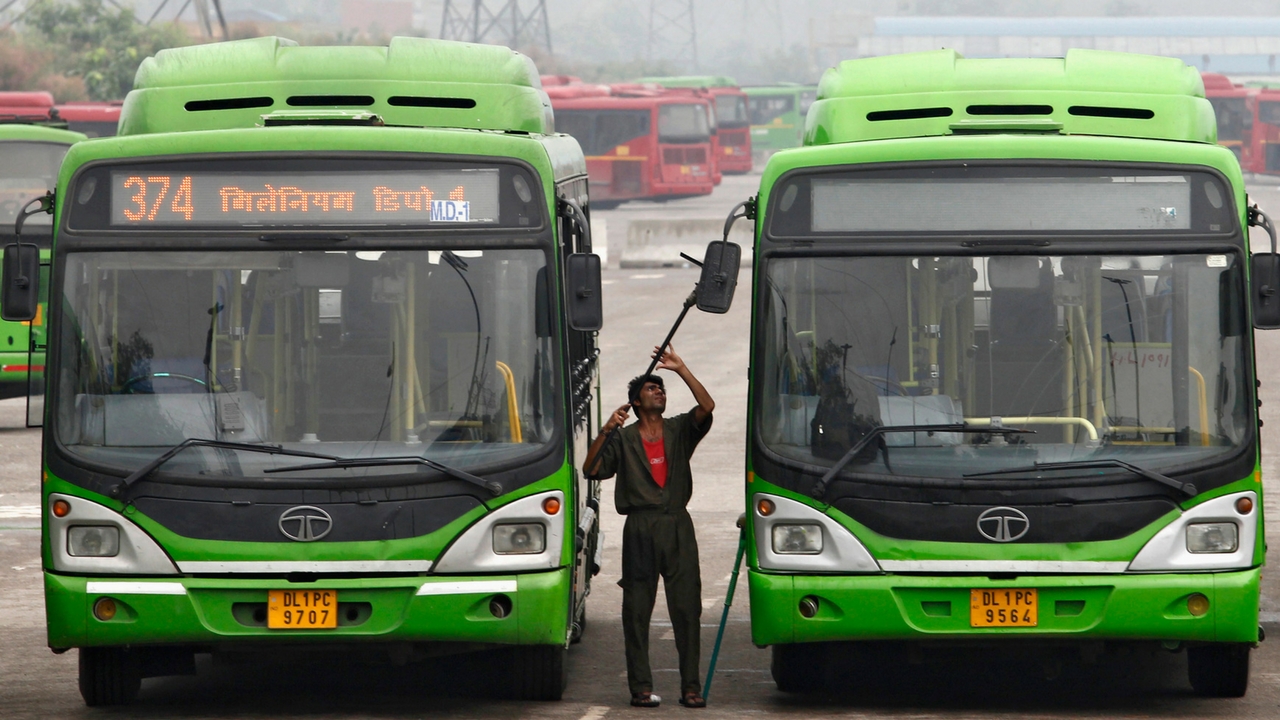
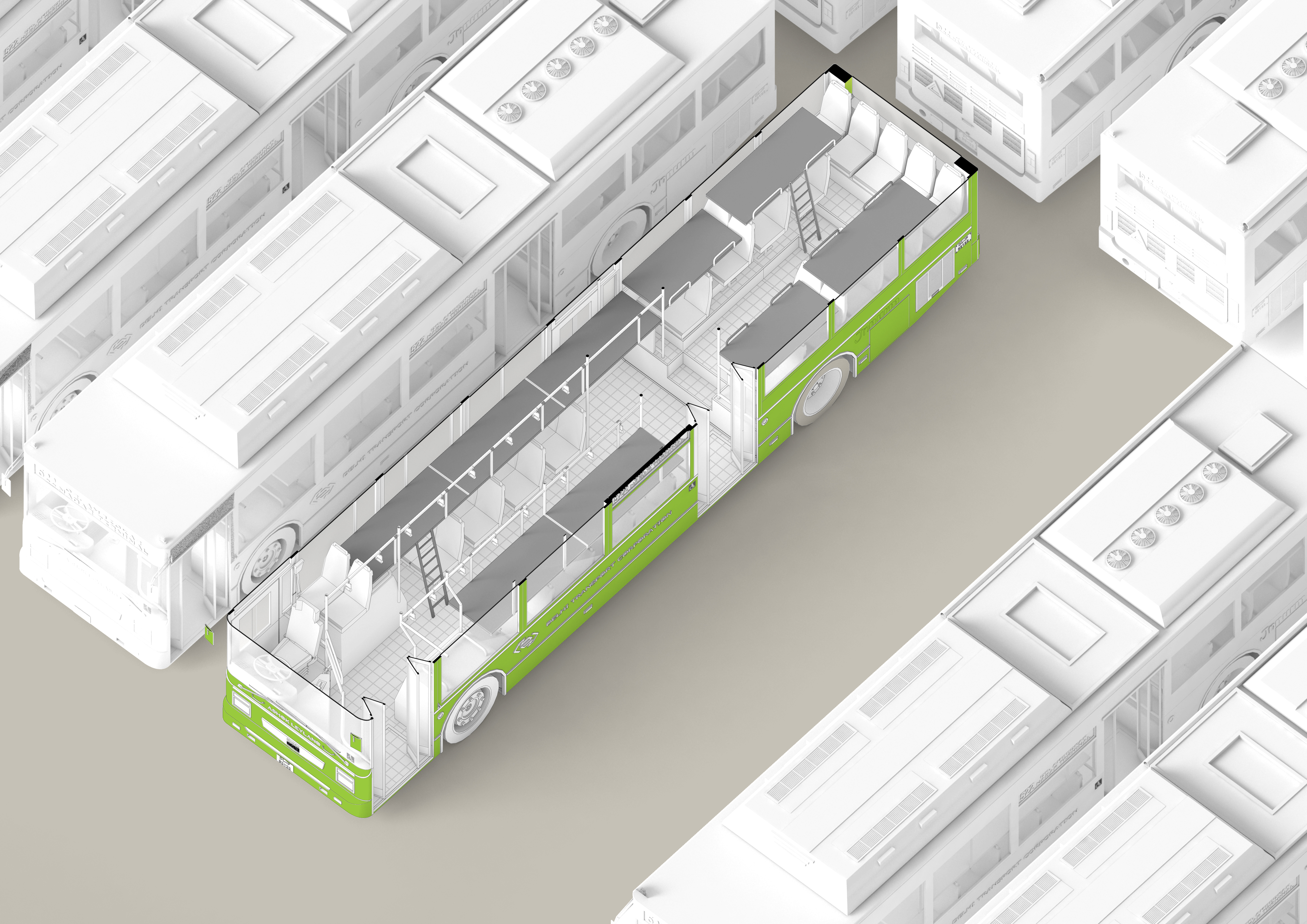
Concept
Using buses as rooms
Having doors, windows, lighting, fans and a decent level of insulation, city buses can provide better thermal comfort than porta cabin shelter facilities.
A modular bedding system could be designed to assemble over existing seating arrangements at night – without any layout modifications.
Using buses as rooms
Having doors, windows, lighting, fans and a decent level of insulation, city buses can provide better thermal comfort than porta cabin shelter facilities.
A modular bedding system could be designed to assemble over existing seating arrangements at night – without any layout modifications.
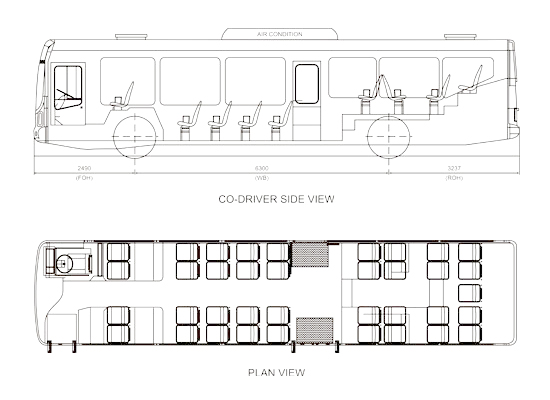

Outcome
A multi-functional depot
Integrating a shelter in a bus depot associates a new meaning to the facility - plugging in medical and community kitchen facilities opens up the depot infrastructure not just to the new function, but as an active resource to the city - providing monetization opportunities to DTC depots.
A multi-functional depot
Integrating a shelter in a bus depot associates a new meaning to the facility - plugging in medical and community kitchen facilities opens up the depot infrastructure not just to the new function, but as an active resource to the city - providing monetization opportunities to DTC depots.
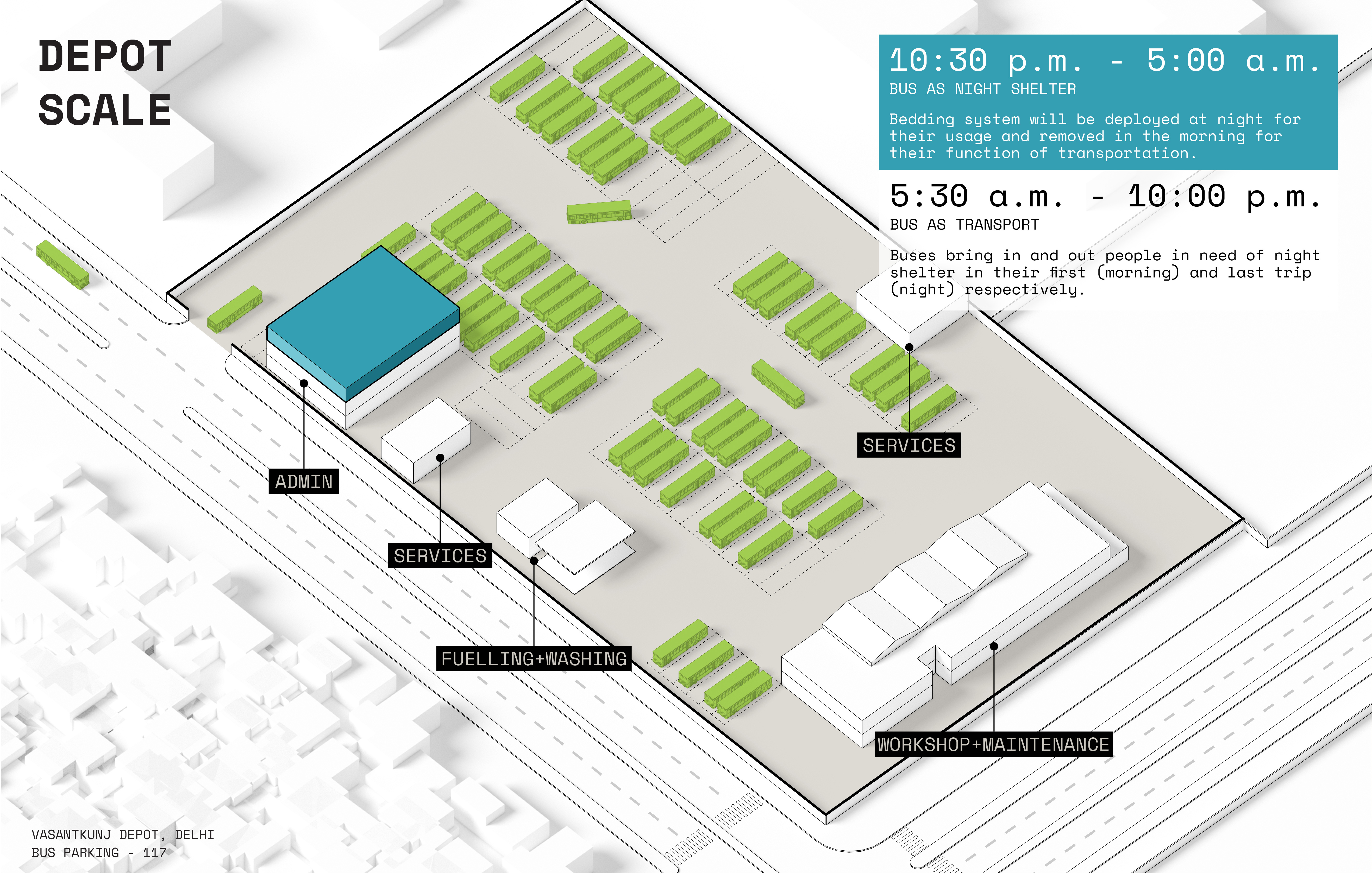


It’s a resource-crunch time for architecture.
Times of severe resource-crunch demand an exploration of architecture and urban design beyond the act of building more structures.
While at present, sustainable construction is associated with using leaner processes of construction and efficient materials, the idea of reducing the need for the construction itself remains unexplored to a large extent.